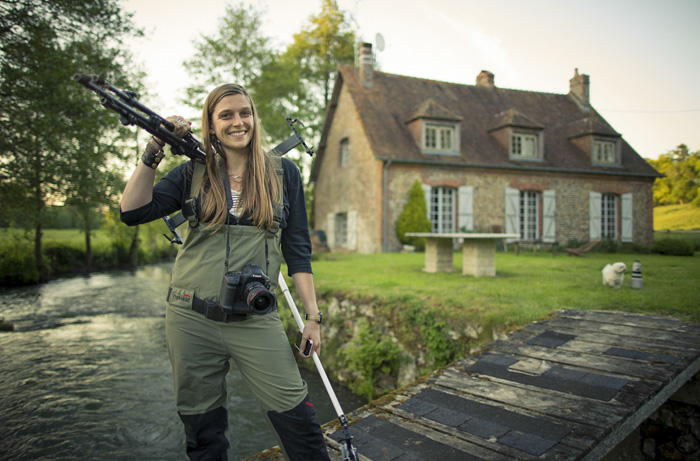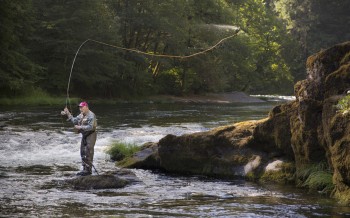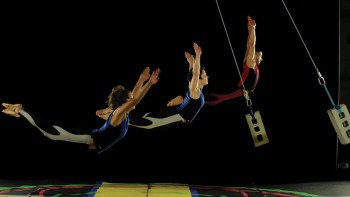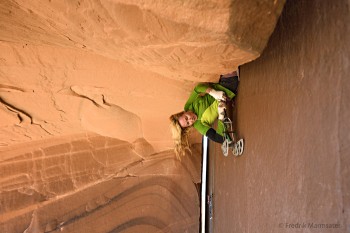Flicks we Love: 3 Picks from Mountainfilm

Held during Memorial Day weekend every year, Mountainfilm in Telluride draws artists, filmmakers, environmentalists, athletes, and activists into the box canyon for one common purpose: to have conversations about issues that matter. This adventure-infused film fest was started in 1979 by a group of climbers—the crew came to town to summit the high peaks by day and rejuvenate with mountain footage at night.
Now, 35 years later, the festival has evolved into a summit that touches on social, wilderness, environmental and human rights issues as well as jaw-dropping adrenaline feats. With close to 85 documentaries showcasing present-day stories about individuals, communities, and environments from around the world, the celebration is nothing short of inspiration.
“[Mountainfilm] was all about climbing, outdoor adventure, and mountain-related issues, and began to diversify in the ’90s. It’s gotten a lot more muscular and has evolved to a different stage,” says Mountainfilm Executive Director Peter Kenworthy. “There’s increasingly an appetite for this kind of programming and an appetite for content that has real meaning. People want to see what’s going on in the world and who is leading.”
According to Kenworthy, Mountainfilm opens up submissions for films every fall. The committee considers close to 500 films, of which 10 to 20 percent are selected for the lineup. Then, from the film-reel to the foreground, the festival becomes a hotbed for dialogue starting with the Moving Mountains Symposium. This year’s topic was Wilderness with emcee M. Sanjayan, executive vice president at Conservation International, and keynote presenters including oceanographer Sylvia Earle and wildlife biologist John Francis—who is the National Geographic Society vice president for research, conservation and exploration—amongst other ground-moving individuals. Other special guests ranged from mountaineer Conrad Anker to activist Tim DeChristopher and author Cheryl Strayed, who led the morning’s coffee-and-conversation panels and evening’s booze-and-banter sessions.
With an unparalleled energy, the weekend engages folks with a desire to do more, in their own lives and in their communities. Post festival, a selection of close to 30 films takes off for the Mountainfilm world tour with stops from Omaha to Boise, Burlington, and Atlanta. Here’s a roundup of three of our favorite flicks that you’ll want to catch:

Photo: Uncage the Soul Video Production
No other film could have resonated as well on Memorial Day: Mending the Line shares the life-long dream of 90-year-old World War II veteran Frank Moore. In 1944, he arrived with 150,000 troops in Normandy, France for the D-Day invasion. While crossing over a bridge in town, he saw a single salmon hanging outside of a café—an image that’s remained engraved in his mind for seven decades. The film captures Frank returning to Normandy to toss his fishing line into those waters, with his wife Jeanne and son Frankie by his side. The humanness of this story—Frank’s struggle with post-traumatic stress disorder, the healing ability of nature, and the fortitude of unconditional love—is the most potent strand.
“It’s a film about a World War II veteran that’s a fly fisherman—but you don’t have to be a fly fisherman or a veteran to understand or relate. Ultimately, it’s a human story,” says producer Anna Brones.
2. Born to Fly

Also known as the Evel Knievel of dance, choreographer Elizabeth Streb has been pushing the conventions of performance art since the 1970’s. Dubbed “popaction,” Streb’s unconstrained style weaves together extreme motions of dance, circus stunts, and aerial throws. With an eye for geometric shapes, she integrates the dancers and their moves into the environments that they occupy—be it a building, bridge, or scaffolding—and she continuously challenges the space-time relationship to help humans fly. In 2003, Streb opened the doors of SLAM, STREB Lab for Action Mechanics, in Brooklyn, New York. However, the world first got a taste of popaction with the 2012 Summer Olympics in London: STREB was commissioned to perform seven action events on landmarks including the Millennium Bridge, Trafalgar Square, and the London Eye.
“People leave this film thinking about bigger questions, and what changes they might make in their life,” said director Catherine Gund. “You could either jump off a tall building or you could go to a hot yoga class. It’s those things that make us participate in our own lives and change the world around us. People can push themselves and it doesn’t need to be death defying to have a profound resonance.”

Off-width Outlaw follows professional off-width climber Pamela Shanti Pack into the deep and rugged cracks of Indian Creek in Southeastern Utah. With just three days behind the lens, director and climber Celin Serbo kept the camera on Pamela while she established new routes—a process that was gritty on both ends.
“It’s tough because it’s crappy light in the dark recesses where she is, and when glowing light in the morning is going on it’s not in the crack,” Serbo said.
Well, the team got the shots. Along with sweeping aerial footage and the indignant-yet-charismatic jokes of Pamela, the footage is grueling yet awesome.
Check out what Serbo told WomensMovement about the film and off-width climbing:
WM: Do you off-width climb, too?
Celin Serbo: Some, but not like [Pamela.] She’s one of the few. Off-width is definitely a small little subset within the whole and there are not many people—male or female—that seek out off-width. It’s something that people may practice in case they find themselves in a situation where they’d need to use those techniques, but for the most part it’s something they avoid if they can. She’s definitely a unique character.
WM: What qualities do you think differentiate the climbers that get into off-width?
Celin Serbo: You really have to have a high pain tolerance and almost thrive on that a little, and a very stubborn demeanor. It’s just battling. It’s using big muscle groups, not tiny fibers like in your fingers. In other more traditional climbing you’re grabbing rock, and in this you are filling space between rocks and it’s not as intuitive. With [off-width] most of the technique is not intuitive—you have to learn it. It’s very geometrical, and you’re contorting your body to fill the space.
WM: What do you think draws people to the film?
Celin Serbo: Off-width climbing, in general—you don’t see much about it. And Pamela—she’s a woman and there just aren’t that many women that are really pursuing that type of climbing solely.
Kamagra oral jelly Online something to buy the most convenient way. He doesn’t demand from you any actions except how to visit the website. And in separate with goods necessary to you to put the end. To specify your address and to wait for the supplier to whom you will give money.


LET'S GET SOCIAL